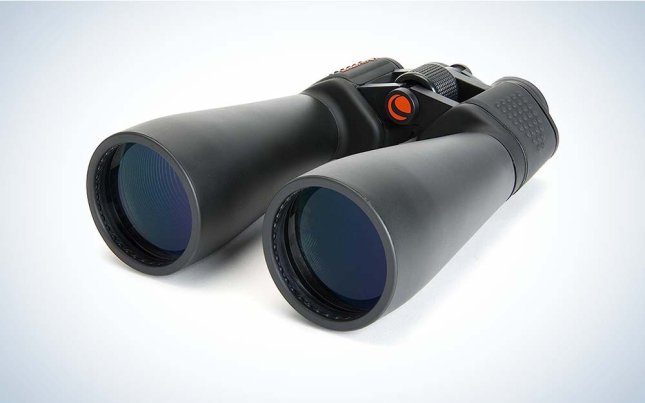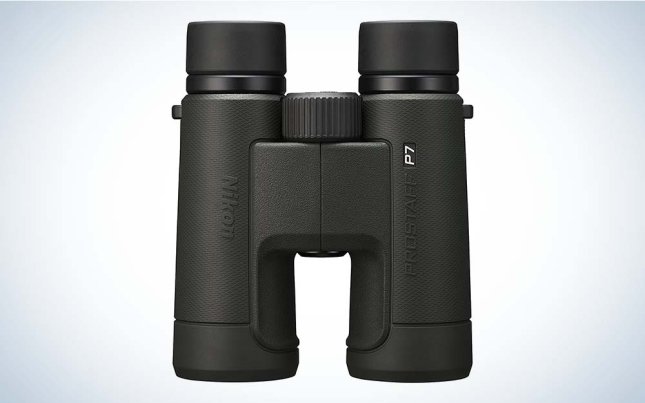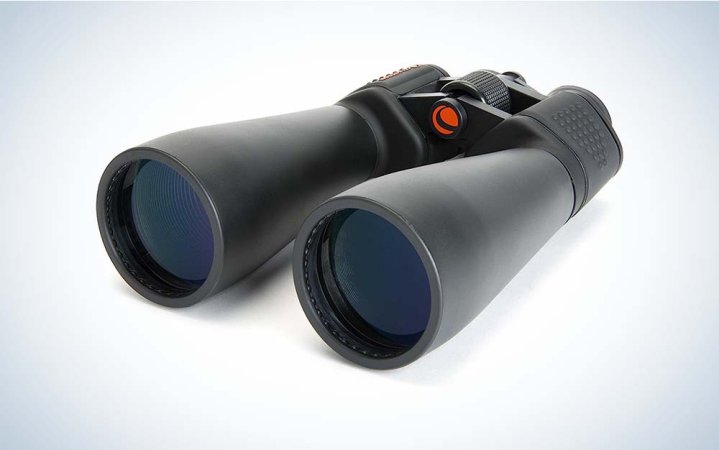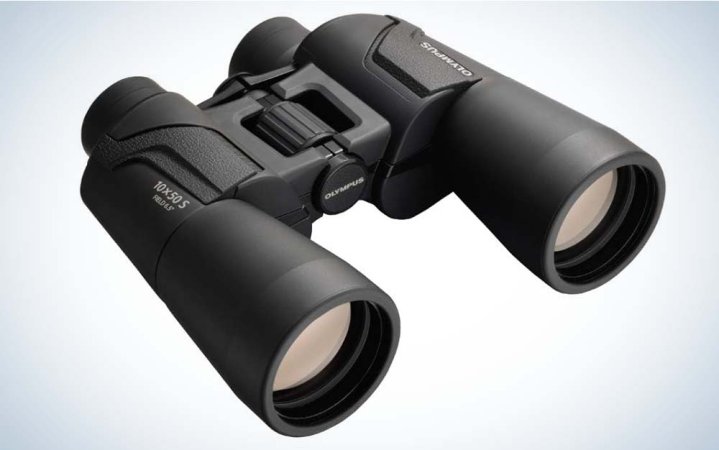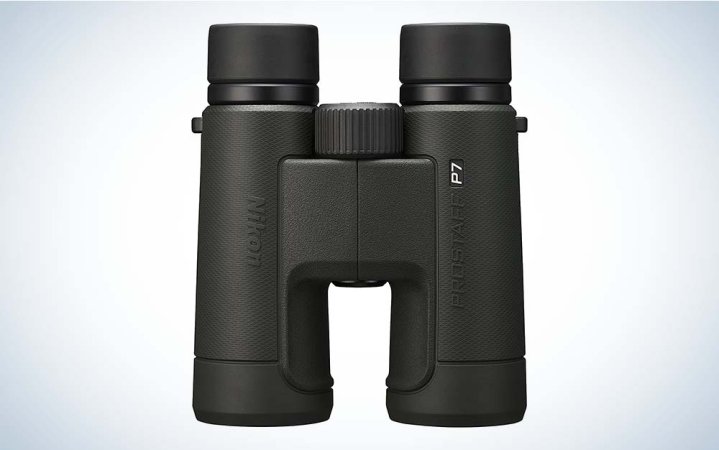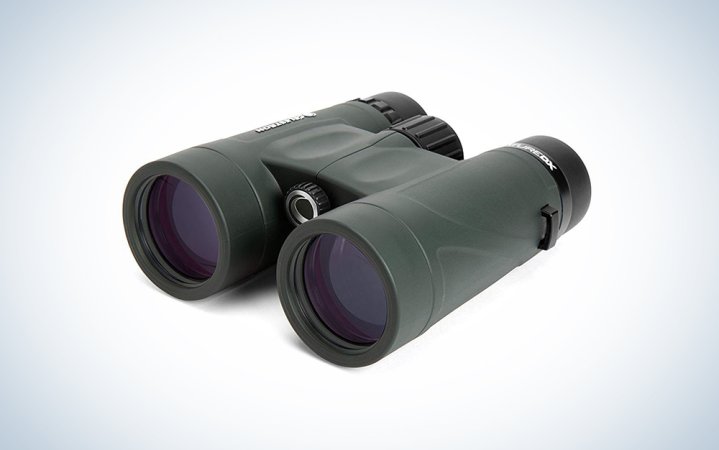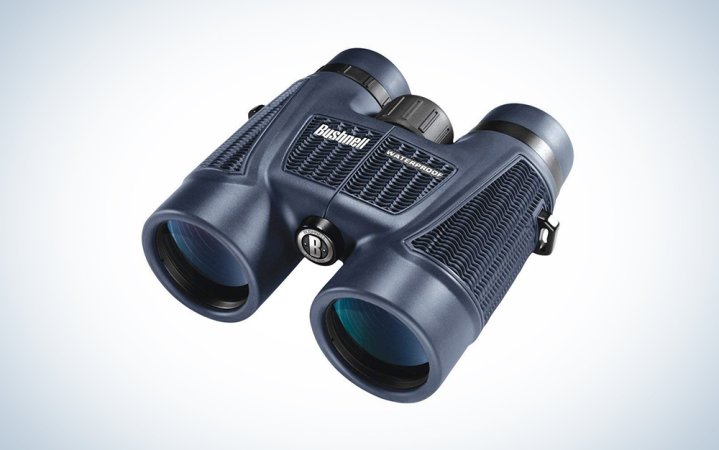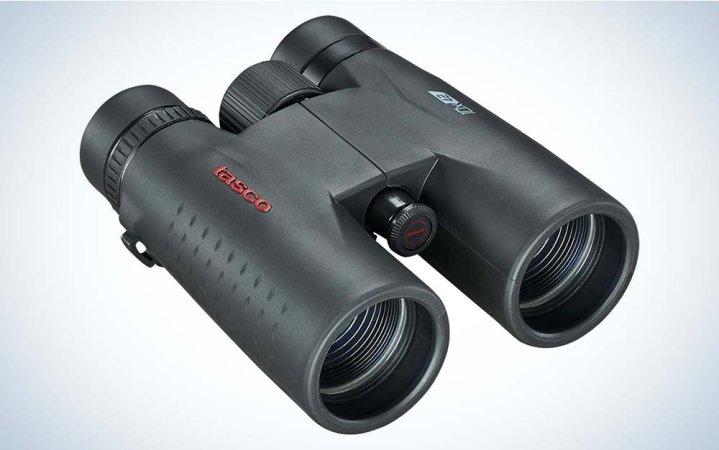We may earn revenue from the products available on this page and participate in affiliate programs. Learn more ›
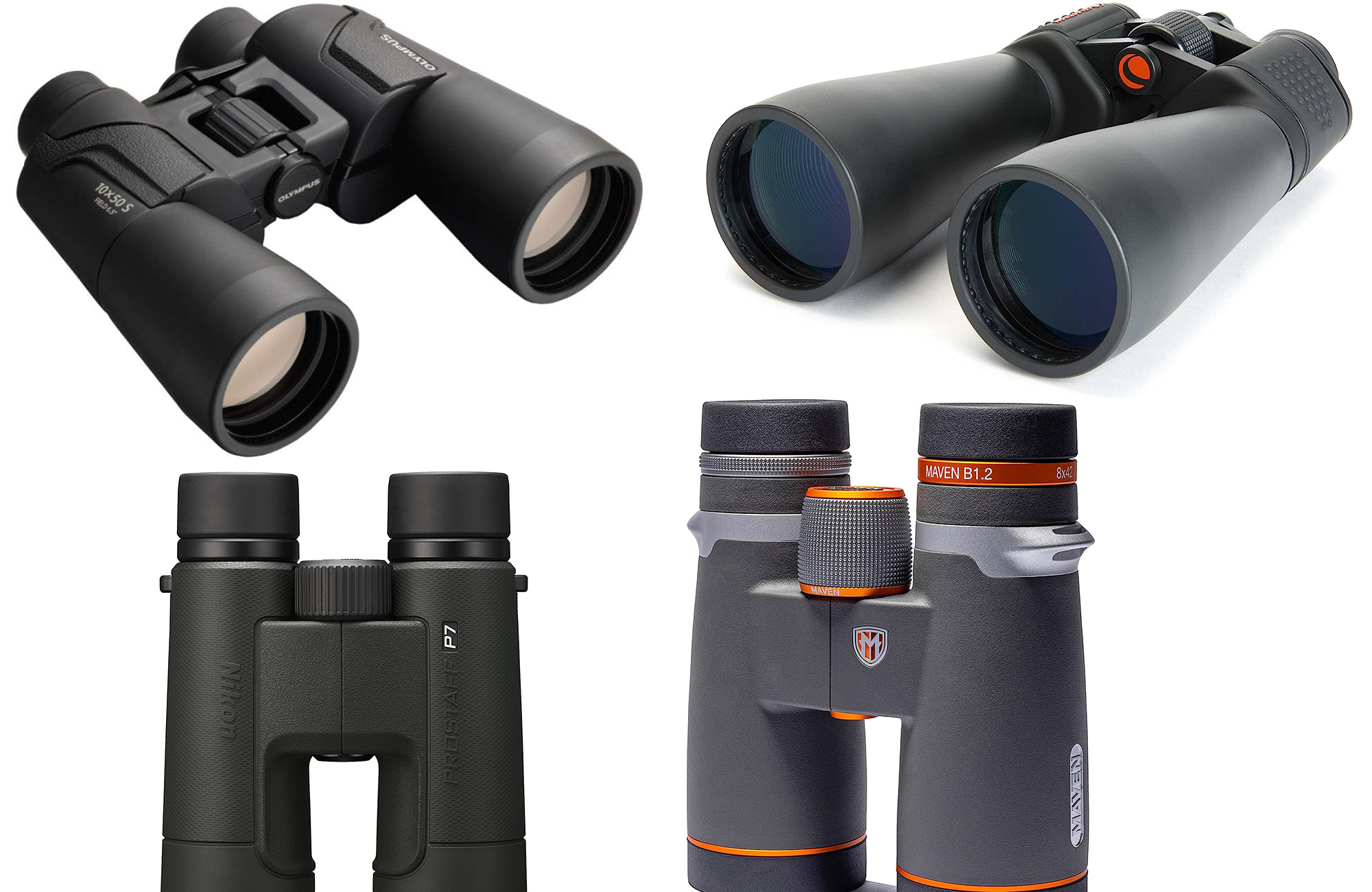
The thrill of spotting a beautiful bird never gets old, especially when you’ve got binoculars for bird watching to see every feather in detail. If you’re new to birding, binoculars will help you see more from a single location. The best bird-watching binoculars capture light and color to make it feel like you could reach out and touch the feathers with your finger. Binoculars come in a wide range of prices, from ones that will make you wonder if you’re buying a small car to ones that are easier on the wallet. A pair that fits your budget, birding habits, and hands will let you spot birds like never before. Keep reading to get our views on the best bird-watching binoculars and get a few tips before buying.
- Best overall: Celestron 71009 SkyMaster
- Best close focus: Maven B1 10×42
- Best premium: Olympus 10×50 Binoculars
- Best ergonomic: Nikon Prostaff Binoculars
- Best for travel: Celestron – Nature DX 8×42 Binoculars
- Best waterproof: Bushnell H2O Waterproof/Fogproof Roof Prism Binoculars
- Best budget: Tasco Essentials 8×42
How we chose the best bird-watching binoculars
For a serious birder, binoculars are an investment, whereas a casual amateur doesn’t need quite the same features. But both users want the same thing: the ability to see birds with accurate colors and clear images. To meet that need, I judged the binoculars based on their image clarity, brightness, focus speed, close-focus performance, ergonomics, and weight.
Clarity and brightness: Clarity and brightness come down to the lens and prism design and their coatings. Coatings help target colors and reduce reflection to increase the light that enters the binoculars.
Focus speed: Birds move fast; binoculars that quickly focus mean you still get to see your target.
Close-focus performance: If you’re lucky enough to get within 10 feet of a bird, you want to be able to get even closer with your binoculars.
Ergonomics and weight: You might have to wait a long time for a bird to appear. Good ergonomics will make the experience easier on your hands and shoulders, and lighter options make them easier to hold while watching and waiting.
The best bird-watching binoculars: Reviews & Recommendations
If you enjoy seeing birds up close, you’re in good company. According to a 2016 U.S. Fish and Wildlife Service survey, more than 45 million people identified as birders in the United States, and that number is believed to have increased during the pandemic. Whether you’re looking for a premium model with high-quality optics or binoculars you can easily toss into a backpack, there’s a pair that will suit your needs below.
Best overall: Celestron 71009 SkyMaster
Best overall
Celestron 71009 SkyMaster
Pros
- Large center focus dial for ultra-sharp focus
- 15x magnification for detailed viewing
- Eyeglass-friendly eyecups
Cons
- Quite heavy
Specs
- Magnification: 15x
- Lens: 70mm
- Weight: 3.28 pounds
Why they made the cut: Equally well-suited for both expert and novice birders, the Celestron SkyMaster binoculars offer top-of-the-line features at an accessible price.
Ready to get up close to your favorite birds? The Celestron 71009 SkyMaster binoculars boast a 15x magnification level that brings you closer to nature than ever before. The large objective lens allows you to catch every moment, even in low-light conditions, and the rugged textured finish helps stabilize your grip.
Beyond these amazing attributes, Celestron has included many thoughtful additions. Your package includes an objective lens cap, tripod, and adapter for your binoculars. Note that this pair is quite heavy, weighing a hefty 3.28 pounds. For best function during extended bird-watching adventures, it’s recommended to use these with a tripod. For more options, check out our guide to the best binoculars for hiking.
Best close focus: Maven B1 10×42
Best close range
Maven B1 10×42
Pros
- Easy to adjust focus
- Extra-low dispersion glass maximizes available light
- Excellent clarity and color at close distances
Cons
- Can be hefty for smaller users
Specs
- Magnification: 10x
- Lens: 42mm
- Weight: 1.76 pounds
Why they made the cut: The Maven can get crystal-clear close focus and includes focus adjustments that are a cinch to do, even when you’re freaking out about being super close to a new bird.
The Maven B1 features impressive focus that’s a cinch to use. This pair also features extra-low dispersion glass that resists reflection to maximize the amount of light that enters the binoculars. For you, more light means better clarity and color even as conditions start to dim.
While we love this model for its close focus, the Maven is definitely up there with the top binoculars for distances as well. A wide field of view makes it easier to spot small, quick birds. This model is completed with a durable casing to protect them from the elements and comes with a microfiber storage bag.
Best premium: Olympus 10×50 Binoculars
Best premium
Olympus 10×50 Binoculars
Pros
- Wide field of view
- Aspherical lenses
- Responsive focus wheel
Cons
- Zoom lever can be difficult to operate
Specs
- Magnification: 10x
- Lens: 50mm
- Weight: 1.88 pounds
Why they made the cut: You’ll be able to count every feather with the wide field of view and magnification power of these Olympus binoculars.
If you’re ready to take your bird watching to the next level, consider the Olympus 10×50 Binoculars. This pair boasts incredible optical clarity with zero chromatic aberration. The wide field of view means that even the smallest avian friends appear as sharp, bright images, with excellent color rendition and contrast.
Equally excellent for daytime or nighttime observation, these binoculars feel as good as they look. The body is coated in a protective rubber, adding a tactile edge to the equipment. Paired with the smooth hinge and included case, neck strap, and lens covers, this option will make you feel like a bird-watching pro atop your own Mt. Olympus.
Best ergonomic: Nikon Prostaff Binoculars
Best ergonomic
Nikon Prostaff Binoculars
Pros
- High-reflective mirror-coated prisms
- Shock resistant
- Waterproof
- Compatible with tripods
Cons
- No image stabilization
Specs
- Magnification: 8x
- Lens: 42mm
- Weight: 1.43 pounds
Why they made the cut: Nikon’s cutting-edge technology, paired with the comfort birders crave, makes the Prostaff Binoculars an instant classic.
The Nikon Prostaff Binoculars are excellent for a devoted birder. Featuring turn-and-slide rubber eyecups and a specialized long eye relief design, they’re a perfect fit for all birdwatchers, including those who wear eyeglasses. This lightweight pair sits easily in hand, while rubber armoring provides shock resistance. They’re also waterproof, so in the event of an accidental rainstorm, your hearty binoculars should be OK.
The high-reflective mirror-coated prisms provide excellent light transmission, while nitrogen gas means fog and mold will not form inside the optical system. Even in foggy or darkening conditions, you can spot your favorite species in crisp detail with true-to-life colors. Nikon’s trusted technology allows this pair to rise above the rest when it comes to ergonomic comfort and design.
Best for travel: Celestron – Nature DX 8×42 Binoculars
Quality lens
Clear Sight
Pros
- High-quality optics
- Waterproof
- Lightweight
- Protected by rubber
Cons
- Expensive
Specs
- Magnification: 8x
- Lens: 42mm
- Weight: 3.28 pounds
Why they made the cut: At 12.1 ounces, these lightweight binoculars are easy to stow into a backpack but come with premium features and protection.
These binoculars are comfortable, light, and easy to handle. Whether you’re watching shorebirds flock or are fascinated by pigeons fighting over a french fry on the other side of the street, you’ll enjoy both a wide field of view at a distance and a sharp focus close-up.
Best waterproof: Bushnell H2O Waterproof/Fogproof Roof Prism Binocular
Safe near water
Birds Of A Feather In Any Weather
Pros
- Waterproof
- Durable
- Fog-proof
- Eyecups good for people who wear glasses
Cons
- Heavier than some models
Why they made the cut: These waterproof binoculars are rugged and great for taking on the water.
This pair is a good value all on its own. For intrepid birders in boats or braving wet conditions, the waterproof and fog-proof features make them a fine choice to pack alongside your rain jacket. People who wear glasses will appreciate the adjustable eyecups.
Best budget: Tasco Essentials 8×42
Best budget
Tasco Essentials 8×42
Pros
- Multi-coated lenses improve resolution and brightness
- Compact size and lightweight
- Weather-resistant housing
Cons
- Slow to focus
Specs
- Magnification: 8x
- Lens: 42mm
- Weight: 1.45 pounds
Why they made the cut: The Tasco Essentials has just enough of everything for the beginner birder and won’t put you over a tight budget.
The Tasco Essentials 8×42 may not have the focal speed and crystal clarity of some of the more expensive models on our list, but they’re impressive in their price range. A lightweight design and weather-resistant housing create binoculars for those who don’t want to get weighed down while on more rugged birding adventures.
Prism and lens coatings create clearer images and offer good brightness at this price point. You might have to wait a little longer at dawn and dusk for the best visibility, but you’ll get great views without investing an arm and a leg in your binoculars. Where you’ll see a big performance difference with this model is that they are much slower to focus. However, be patient, and you’ll get your views.
Things to consider before buying bird-watching binoculars
Binoculars have numbers like 10×42 or 8×42 after the name. The first number is the magnification, and the second is the diameter of the objective lens. (The objective lens is the one closest to the bird.) The objective lens can give you a good idea of how big the binoculars are. Larger lenses also gather more light for brighter, clearer images.
Field of view
Birds are small, so you need to balance magnification with field of view. Birdwatchers tend to prefer 8x magnification for its wider field of view over the extra magnification offered with 10x models.
Lenses, prism design, and coatings
Lenses and prisms with high-tech coatings help focus colors and capture light to provide clear, accurate images. These coatings and lens designs are often why two pairs of binoculars may look the same on the outside but have hundreds of dollars difference in their price. On the inside, the more expensive binoculars have extra coatings that focus on colors for better accuracy and allow more light to enter the lens. That helps create brighter images and clarity from one end of the lens to the other.
FAQs
Binoculars with 10x magnification offer a closer view. However, they also have a smaller field of view, which could make it hard to spot the bird. Most birders prefer 8x binoculars because they get good magnification with a wider field of view.
Start with your budget, then look for a pair that’s comfortable to hold and easy to focus. You should be able to reach the focus while holding the binoculars to your eyes. Next, consider the specs, like the magnification, field of view, and coatings. These will determine the clarity of the images, color, accuracy, and brightness.
The cost of binoculars ranges from more than $1,000 for a premium model like the Olympus 10×50 Binoculars to less than $100 for the wallet-friendly Tasco Essentials 8×42.
Final thoughts on bird-watching binoculars
- Best overall: Celestron 71009 SkyMaster
- Best close focus: Maven B1 10×42
- Best premium: Olympus 10×50 Binoculars
- Best ergonomic: Nikon Prostaff Binoculars
- Best for travel: Celestron – Nature DX 8×42 Binoculars
- Best waterproof: Bushnell H2O Waterproof/Fogproof Roof Prism Binoculars
- Best budget: Tasco Essentials 8×42
If you’re ready to invest in binoculars to use for every bird outing and conditions, the Olympus Binocular 10×50 are the ones. This pair’s color, clarity, and brightness outshine their price point. However, if you’re on a more conservative budget, the Tasco Essentials 8×42 provides great viewing with a smaller price tag.
